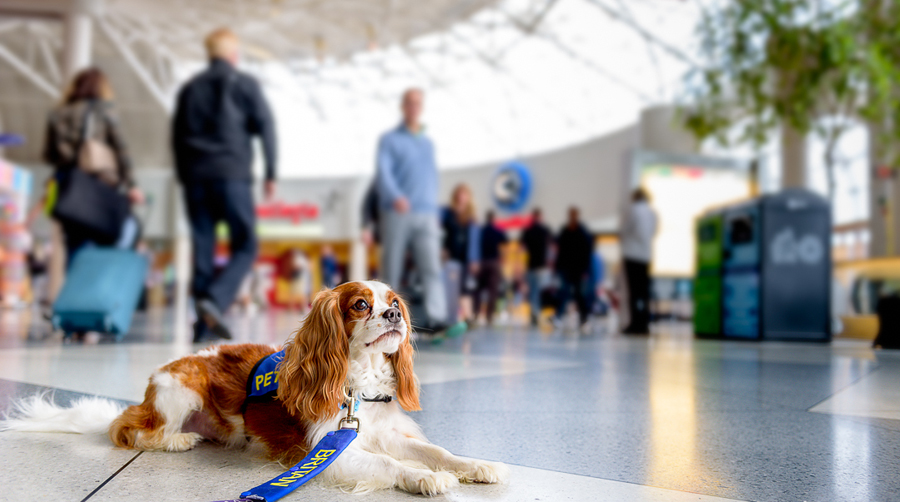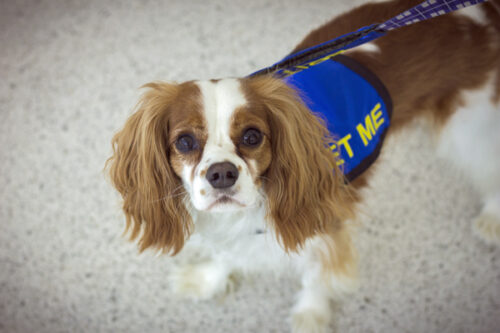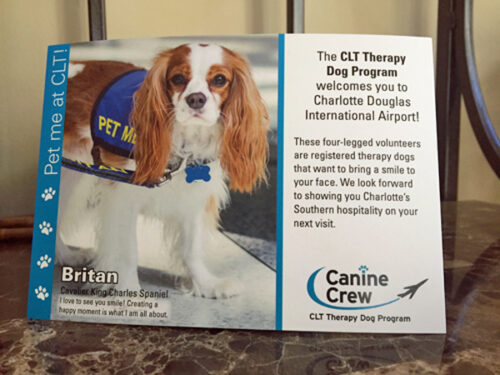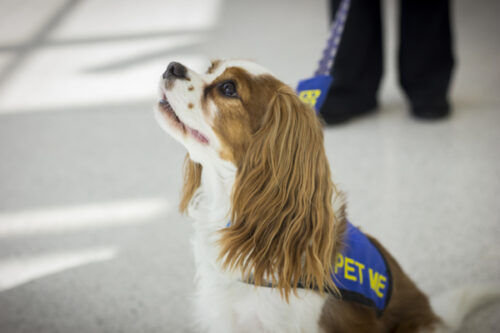
A Dog Chosen to Provide Comfort
Cavaliers make great therapy dogs and therapy dogs ROCK! The Cavalier King Charles Spaniel is especially suited for the job. This affectionate breed is up to the task of providing comfort to people who need a bright spot in their day. By communicating with their soulful eyes, they can make a person feel less alone. With an intuitive sense, they can draw a person outside of the daily routine, to feel joy. We already know they are lovable companions, but it is awesome to watch them bring light into someone’s eyes.

As history claims, both King Charles I and his son, Charles II, were lovers of the breed. Charles II was so attached to his spaniels that they went with him everywhere. He issued a royal decree that the dogs should be allowed in all public spaces, including Parliament. Pictures can be found with his dogs lying by his feet. Not surprisingly, the breed inherited the name of the Monarch: The Cavalier King Charles.
For a dog to do therapy work, he or she must be part of an organization and follow their rules. Each therapy dog organization has its own process. For example, the Alliance of Therapy Dogs requires the dog to have a background check and health documentation from a veterinarian. A handling test is given to determine that the dog is good-mannered and well-behaved. Then the prospective team (of handler and dog) goes on three visits with a tester, who observes the actions of both. In addition to these requirements, the dog has to be at least 1 year old, and the handler must have owned the dog, or at least had a relationship with the dog, for at least 6 months. The group’s Board of Directors are also volunteers and tester/observers.

Good interaction between the handler and dog is crucial, and both the handler and dog will be required to pass the necessary requirements of the agency they are joining. Dogs must be able to follow commands from the handler. The handler must be able to understand the dog’s behavioral cues, because situations can arise where the dog might not feel comfortable and the handler might have to intervene. A certain number of required visits are mandated to continue membership, and this rule can vary among groups.
What is so special about Cavaliers as therapy dogs? I think most of us reading this already know. The answer is easy. As a breed they are loving, friendly, and aim to please their person. Their size is good for the task, small enough to be picked up and placed in residents’ laps or on recliners. They are flexible, enjoying being around many people or in a one-on-one situation. They are good with children and older adults. They can be in a quiet environment or one with occasional noise. Their versatility is commendable.

My Cavalier, Britan, has been to many places: to a busy airport, a middle-school
class of behaviorally challenged kids, an assisted living facility, a library where young kids read books to him, a college campus for the students to relieve exam stress, and a residential behavioral health facility for teens aged 12–18. He flourishes in all. Does he have his favorites? Probably, but he has never expressed his desire to me! He just goes with the flow. As the mission of Alliance of Therapy states: “Sharing Smiles and Joy.” Britan definitely does his part.
He has made special friends along the way. One of them, Margaret, I will never forget. She was a young, 100-year-old woman who always said thank you to me when we left. One classy lady! She would ask how I made his sweet potato treats. When we walked into her room, her face lit up. Unfortunately, she passed during the pandemic, and we never got to say our goodbye. When we were fortunate enough to go back to the assisted living facility where she had been, I wondered if Britan would stop at her door. Maybe he did pause as we passed by the hall where her room was. But I am not sure he understood that she was not there.

Special bonds were made between Britan and those people we visited. Nothing in life can top those times when a dog and a person make a connection that only they can understand. At times I had wished he could talk and tell me his feelings, but his body language and facial expressions told me
it all.
Britan is now 7 years old and has made many people smile and continues to do so each week. It may just be moments that he shares but to those waiting for his visit it seems more.
Today I am thankful that therapy dogs do their jobs so well. As a nurse, I know how therapeutic these times can be to healing others both physically and emotionally. Cavaliers are special, and their providing smiles and joy is a gift—just as they are a gift to those of us who have the honor of sharing our lives with them.
Anyone looking for more information on therapy dogs can contact me at luvanrn@att.net. I will be sure to respond.
Barbara J Peters
Barbarajpeters.com
Photography by richtaylorphotography.com
